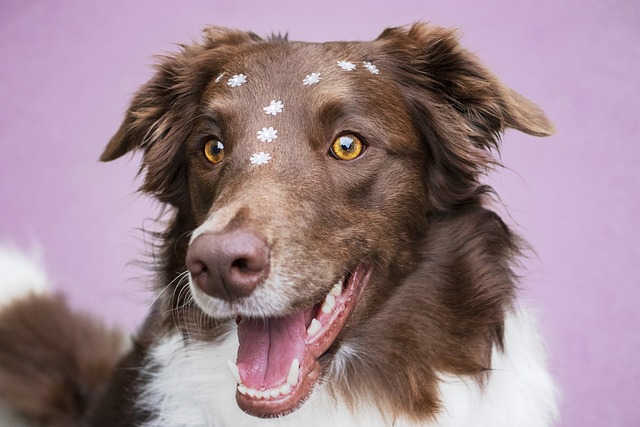On a peaceful night, you sit on the sofa with your dearest dog beside you. It has developed several red spots on its skin and its hair is starting to fall off. You gently caressed its head, filled with worry and helplessness in your heart. Recently, the dog's ringworm has been recurring, and although you have tried various treatment methods, the problem seems to have not been completely resolved. You start thinking: How can I help my dog get rid of this problem and restore its health and happiness?
Canine ringworm, also known as canine ringworm or fungal skin infection, is a common skin disease typically caused by fungi. It not only affects the appearance of dogs, but also causes itching, discomfort, and even secondary infections. For the owner, seeing their dog suffering from ringworm disease inevitably makes them feel anxious and helpless. However, in the face of recurrent outbreaks of dog ringworm, we need to remain calm and patient, and adopt scientific methods to address this issue.
Firstly, we need to understand the etiology and transmission pathways of canine ringworm. Canine ringworm is usually caused by Microsporidia canis or Microsporidia gypsum, which can easily reproduce in warm and humid environments. Dogs may contract ringworm through direct contact with infected animals, contaminated objects, or the environment. In addition, dogs with weakened immune systems are more susceptible to infections, so improving their immune system is key to preventing and treating canine ringworm.
In the process of treating dog ringworm, we need to take comprehensive measures. Firstly, diagnosis is very important. If you suspect that your dog has ringworm, you should immediately take it to a veterinarian for skin scraping and fungal culture to determine the specific pathogen. Based on the diagnosis, the veterinarian will prescribe appropriate antifungal medication, such as oral medication, topical ointment, or medicated bath. Timely medication and consistent treatment are key to curing canine ringworm. Even if symptoms have improved, medication should not be stopped too early to prevent fungal recurrence.

In addition to medication treatment, we also need to pay attention to the living environment and hygiene conditions of dogs. Fungi are prone to reproduction in warm and humid environments, therefore, it is crucial to maintain a dry and clean living environment for dogs. Regularly clean and disinfect the dog's bed, toys, and utensils, and avoid using materials that may breed fungi, such as damp towels or carpets. In addition, regularly bathing dogs and using antifungal shampoo can help remove fungi and spores from the surface of the skin.
Emotional communication with dogs is particularly important during the treatment process. Tinea not only affects the physical health of dogs, but may also make them feel anxious and uneasy. As owners, we need to use more patience and love to comfort them and help them get through this difficult period. You can spend some time interacting with your dog every day, gently stroking it, speaking to it in a gentle tone, making it feel at ease and relaxed. If a dog frequently scratches due to itching, you can try putting an Elizabeth ring on it to prevent it from further damaging the skin.
In addition, we also need to closely monitor the diet and nutritional status of dogs. Dogs with weakened immunity are more susceptible to fungal infections, therefore, improving their immunity is an important step in preventing and treating canine ringworm. You can choose high-quality commercial dog food to ensure that your dog receives comprehensive and balanced nutrition. Meanwhile, supplementing with foods or supplements that enhance immunity, such as fish oil rich in Omega-3 fatty acids, vitamin E, and zinc, can help improve a dog's resistance.
In the process of treating dog ringworm, we also need to learn to accept and face reality. The treatment of tinea may take a long time and may even recur. As owners, we need to maintain a positive attitude and believe that through our efforts and care, dogs can ultimately recover their health. Every treatment is an opportunity to overcome the disease together with the dog. Through our patience and persistence, the dog will gradually recover its health and happiness.
Treating dog ringworm is not only a task, but also an expression of love. Every patient care, every gentle encouragement, is our silent commitment to them: no matter how much illness torments them, we will continue to love them and accompany them through every difficulty. The feeling of satisfaction and happiness when we see our dog gradually recovering under our care is indescribable.
So, when you see a dog suffering from psoriasis again, you may want to stop and carefully observe its emotions and needs. Perhaps it just wants some attention or needs a hug. By understanding and guiding, we can help dogs find healthier ways to express themselves, while also making our lives more harmonious and beautiful. After all, dogs are not only our pets, but also our companions and family in life. Their every recovery is a response to our love, and we should also care for them with the same love.






